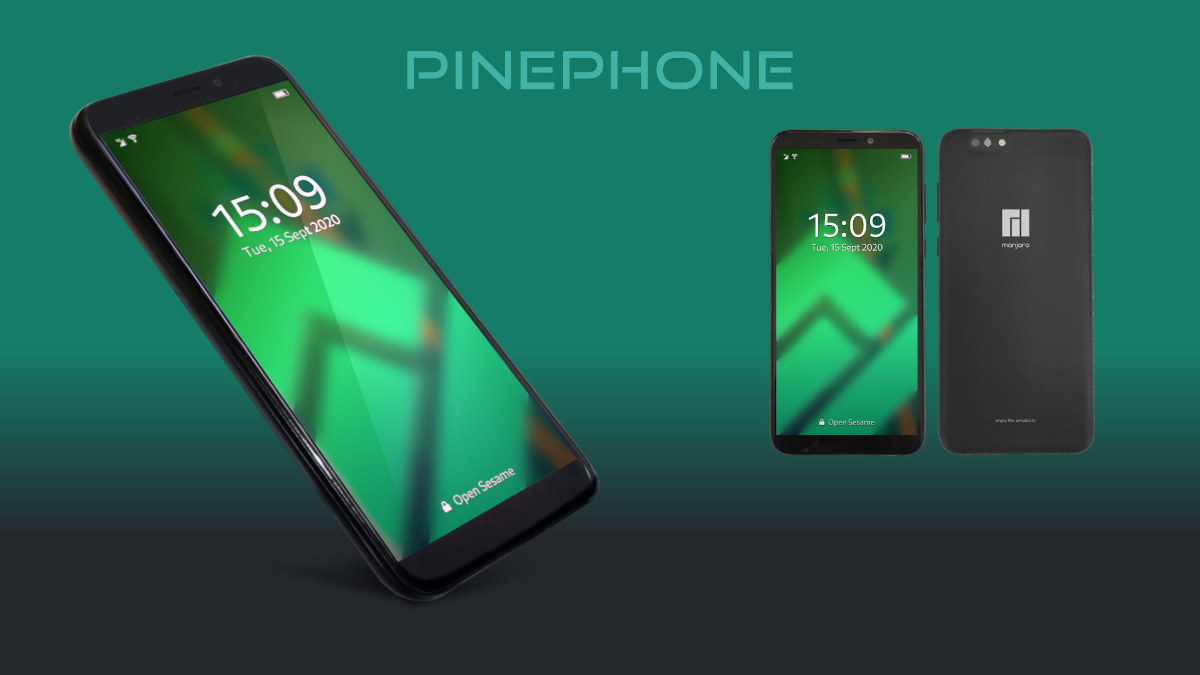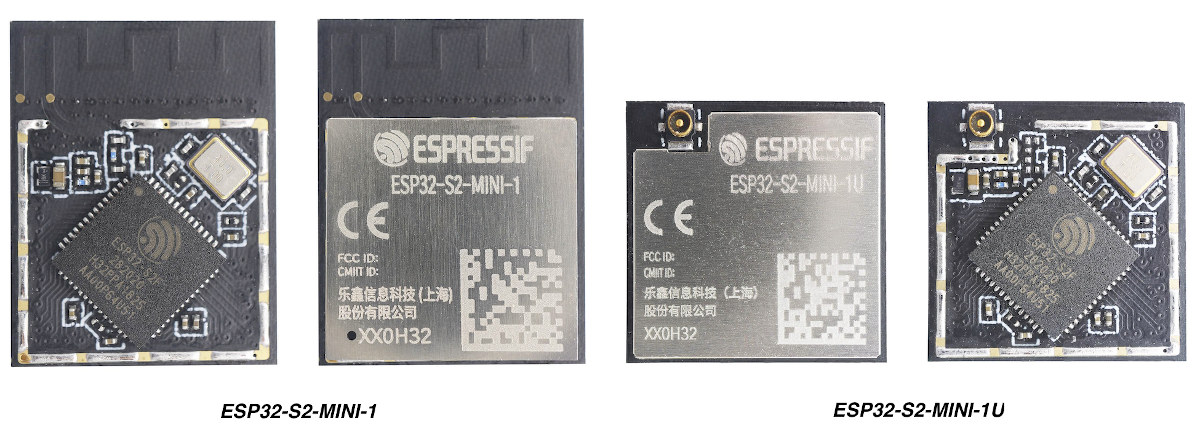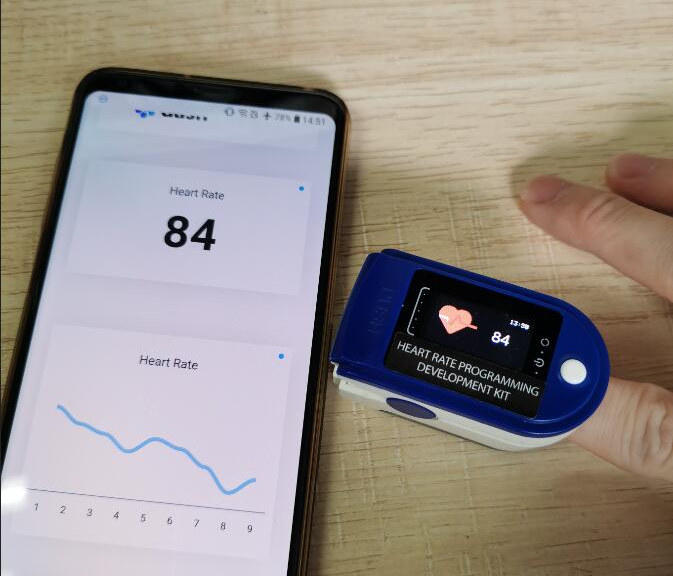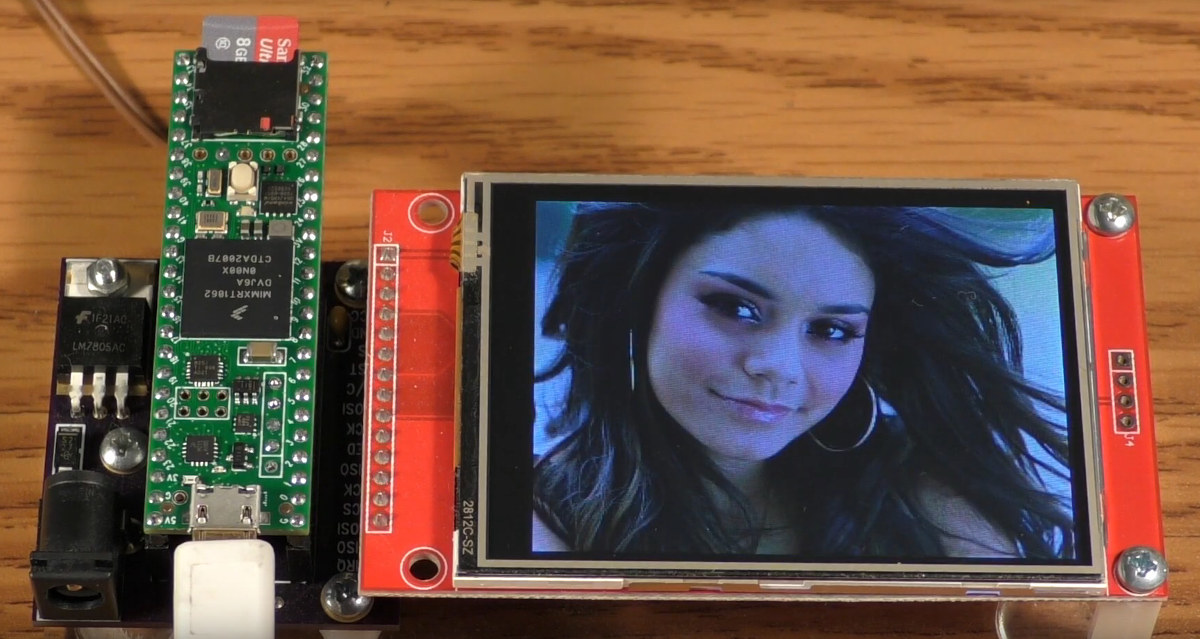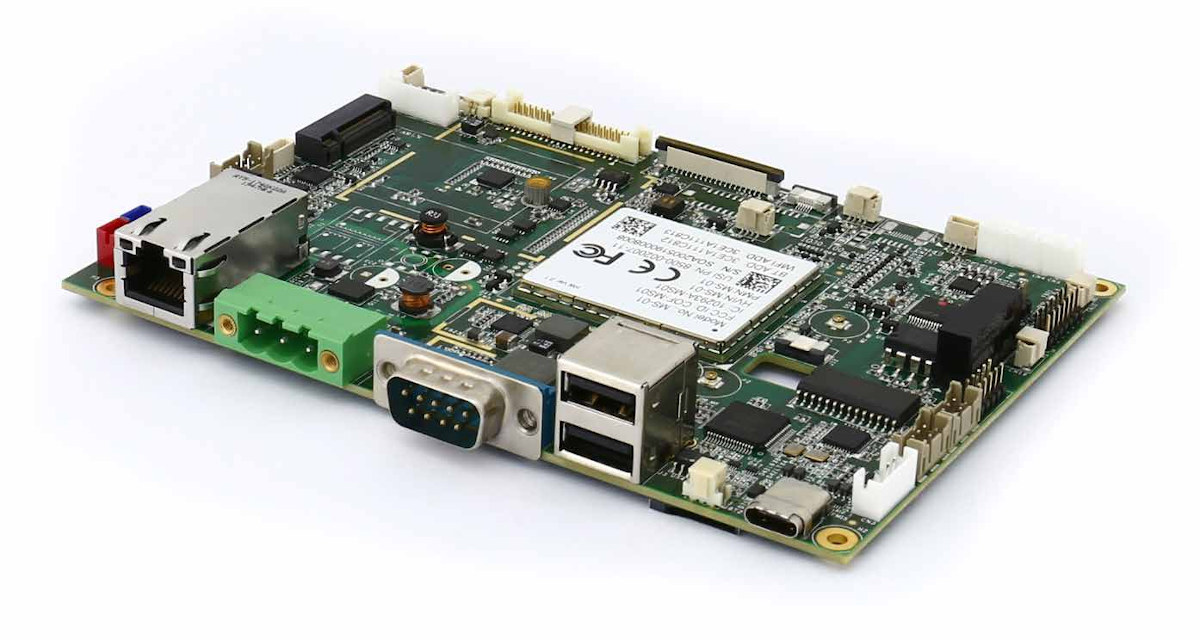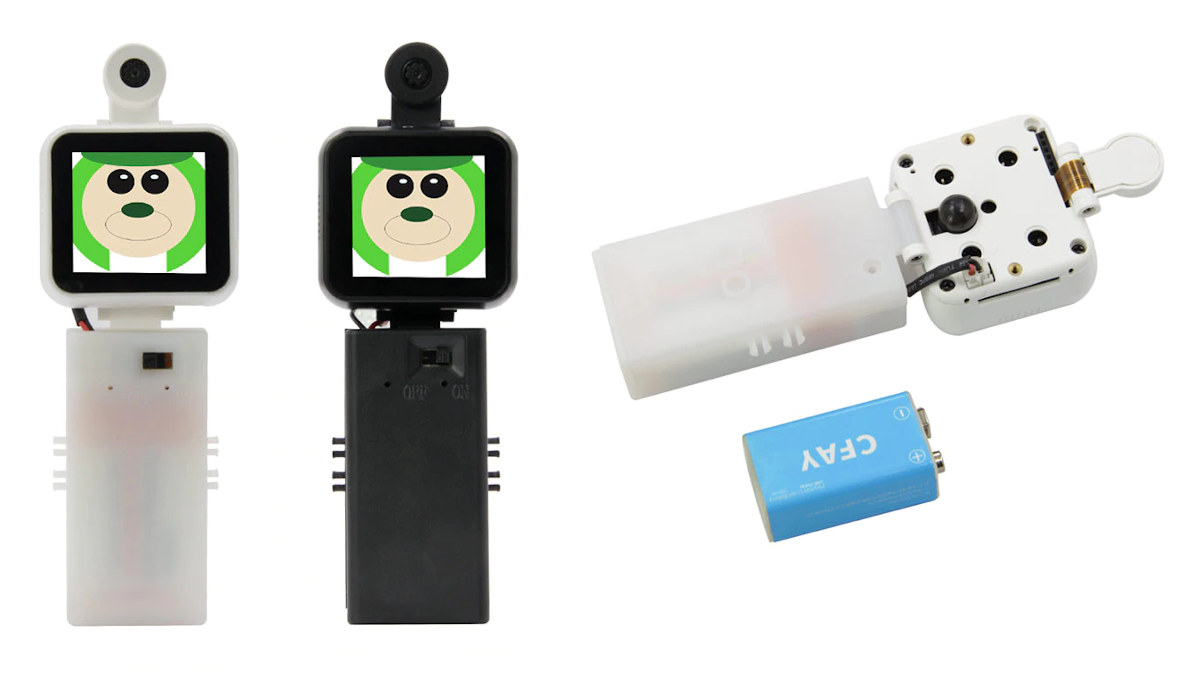Pine64 is producing PinePhone Linux phone in batches and each time there’s a different Linux operating system. It started with the BraveHeart edition in November 2019 without any OS at all, following by the UBPorts community edition, then the PostMarkerOS community edition, and we should expect pre-orders for PinePhone Manjaro Community Edition to start mid-September 2020. Just like for the PostMarketOS edition, the new PinePhone Manjaro CE will be offered in two versions: $149 with 2GB RAM, 16GB eMMC flash $199 with 3GB RAM, 32GB eMMC flash and a USB-C dock for people wanting to connect the phone to a monitor and use it as an entry-level Linux PC The phone still has the same hardware with an Allwinner A64 quad-core Cortex-A53 processor, a 5.95-inch IPS display, rear & front-facing cameras, as well as 4G LTE, WiFi 4 and Bluetooth 4.0 connectivity. The additional USB-C dock that comes with the […]
Espressif Unveils ESP32-S2-MINI Modules, ESP32-S3 and ESP32-C3 SoC’s Coming Soon
Espressif Systems has unveiled two new ESP32-S2 WiFi modules part of the new MINI series modules, namely ESP32-S2-MINI-1U with IPEX antenna, and ESP32-S2-MINI-1 with a PCB antenna. The press release also mentions upcoming ESP32-S3 and ESP32-C3 processors with few details. Let’s have a look. ESP32-S2-MINI modules Preliminary specifications: SoC – Espressif ESP32-S2FH4 single-core 32-bit LX7 microcontroller @ up to 240 MHz, RISC-V ultra-low-power co-processor, 320 kB SRAM, 128kB ROM, 2.4 GHz WiFi 4 connectivity, 4MB flash Antenna ESP32-S2-MINI-1 – PCB antenna ESP32-S2-MINI-1U – IPEX antenna connector Dimensions ESP32-S2-MINI-1 – 20 x 15.4 x mm ESP32-S2-MINI-1U – 15.4 x 15.4 x mm The company states the exact processor SKU used in the module is ESP32-S2FH4, but initially I could not find out it differed from ESP32-S2 since it has the same specs include a single-core processor, ULP core, up to 43 GPIOs, and USB-OTG support. It turns out the flash appears […]
Heart Rate Development Kit Features ESP32 WiSoC, MAX30102 Pulse Oximeter & HR sensor
LilyGO has launched a fair amount of ESP32 boards with some less common features like Ethernet and OLED Display, cellular connectivity, LoRa & GPS, PoE, watch form factor, and more. Their latest product is somewhat different from their earlier boards with the TTGO Heart rate programming development kit being closer to a reference design since it comes with an enclosure similar to commercial products. The heart rate devkit features ESP32 WiFi and Bluetooth SoC, a small LCD, as well as a Maxim Integrated MAX30102 pulse oximeter and heart-rate sensor. TTGO heart rate development kit specifications: SoC – Espressif Systems ESP32 dual-core Tensilica SoC with WiFi 4 & Bluetooth connectivity Display – 0.96-inch IPS LCD via ST7735 SPI controller Sensors MAX30102 heart rate blood oxygen I2C sensor MPU6050 6-axis accelerometer and gyroscope (I2C) Debugging – Micro USB port via CP2104 USB to TTL bridge Misc -PCF8563 RTC, user button Battery […]
JPEGDEC is a Faster JPEG Arduino Library Designed for 32-bit MCUs
In order to ensure software compatibility, Arduino libraries are supposed to work on various types of hardware from 8-bit microcontrollers with a limited amount of memory to more powerful 32-bit chips like STM32 Arm Cortex-M MCU or ESP32 dual-core Tensilica WiSoC that can access a larger amount of RAM. This is all good, but in some cases, this may affect performance. Larry Bank noticed this when looking for a JPEG viewers for Arduino and only found ones which sacrificed speed to work on MCUs with very little RAM. So he started to work on JPEDDEC JPEG Arduino library optimized for speed and compatible with any MCU with at least 20K of RAM. Optimizations go beyond just loading more data into memory, as Larry explains in a blog post, the library also performs the removal of stuffed bytes, optimize the Huffman decode and DCT parts, and more. Some of the key […]
STMicroelectronics Introduces Zigbee 3.0 to the STM32WB55 microcontrollers
STMicroelectronics has added Zigbee 3.0 support to its STM32WB55 wireless microcontroller family using the Zigbee PRO protocol stack. The STM32 Wireless MCU (STM32WB55) was launched last year with a dual-core Arm Cortex-M4 CPU and Cortex M0+ core, as well as Bluetooth 5 and 802.15.4 radios. STMicro is hoping to expand the applications of the STM32WB into areas like home automation as Zigbee 3.0 is making brands choose Zigbee for their smart-home connectivity solution, smart-lighting, smart-building, mesh IoT connectivity, and many more. The STM32WB55 microcontrollers already provide support for Thread and Bluetooth 5.0 and the inclusion of the Zigbee connectivity will take this to the next level. The STM32WB55 Zigbee 3.0 software includes support for the Exegin Zigbee PRO protocol stack which is available for free. To ease development and deployment, STM32WB Zigbee solution supports 46 Zigbee 3.0 clusters and a further 21 clusters support legacy products and with the Zigbee 3.0 […]
Winmate IQ30 Snapdragon 660 SBC Runs Android 9.0 for HMI Touch Panels
Winmate, a company specializing in rugged computing technology headquartered in Taiwan, has recently launched Winmate IQ30 SBC powered by a Qualcomm Snapdragon 660 octa-core coupled with up to 4GB LPDDR4, and 32GB flash storage. The single board computer also comes with a Fast Ethernet port with optional PoE, WiFI 5, and optional cellular connectivity thanks to an an M.2 card socket and SIM card slot, as two video interfaces for Android-powered touch screen displays. Winmate IQ30 specifications: SoC – Qualcomm Snapdragon 660 octa-core processor with 4x Kryo 260 cores @ 2.2GHz, 4x Kryo 260 cores @ 1.8GHz, Adreno 512 GPU, and Hexagon DSP System Memory – 3GB or 4GB LPDDR4 RAM Storage – 32GB MLC flash, MicroSD card slot Display I/F 1x eDP via MIPI to eDP chip 1x LVDS via MIPI to LVDS chip 2x USB Touch FFC connector 2x backlight headers Audio PM660L audio codec 2x speaker headers, […]
TSMC to Start Mass Production of 3nm Chips in 2022
TSMC provides an update to its process technology roadmap at the Online Technology Symposium and OIP Ecosystem Forum with the 5-nanometer (N5) technology having entered mass production earlier this year, and an enhanced N5P version coming in 2021 offering further speed gain and power improvements, followed by N4 process (also 5nm) starting “risk production” in Q1 2021. But the most interesting part was looking ahead to 3nm and 2nm process technologies. TSMC’s N3 (3nm) process aims to provide a 15% performance gain, up to 30% power reduction, and logic density gains up to 70% over N5. N3 will rely on 13.5nm extreme UV (EUV) technology and be first used by UK based AI chip designer Graphcore. Their current AI chip – Colossus Mk2 Intelligence Processing Unit (IPU) – is built on 7nm with 59.4 billion transistors, and the next 3nm chip should have over 100 billion transistors. Anandtech managed to […]
RISC-V & ESP32 based TTGO Handheld T-WATCH K210 AIoT DevKit Works with a 9V Battery
LilyGO TTGO T-Watch K210 AIOT is a rather thick watch development kit based on Kendryte K210 RISC-V AI Processor and ESP32 WiSoC capable of performing AI workloads such as face detection using a USB power source. We first covered the development kit in June, and the company releases some small variants from time to time with the latest being TTGO Handheld T-Watch K210 with basically the same hardware, plus the addition of a handle that adds a power button, and a compartment for a 9V battery to power the watch/devkit. TTGO Handheld T-Watch K210 specifications: SoC – Kendryte K210 dual-core 64-bit RISC-V processor with 8MB RAM, AI accelerators Storage – 16MB flash, MicroSD card slot Display – 1.54-inch capacitive touch IPS screen connected over an 8080 interface Camera – Adjustable 2MP OV2640 sensor with 65-degree lens (optional 120-degree angle lens), AS312 “human” infrared sensor Connectivity – 2.4 GHz 802.11b/g/n WiFi […]


